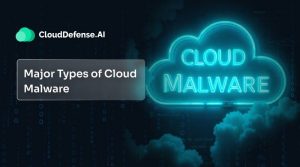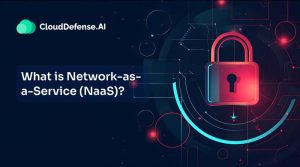What is Ransomware?
Ransomware is a type of malicious software (malware) designed to block access to a computer system or data until a ransom is paid.
It encrypts files or locks users out of their systems, demanding payment—often in cryptocurrency—in exchange for the decryption key. Victims are pressured to comply due to the risk of permanent data loss or public exposure of sensitive information.
Ransomware attacks typically exploit vulnerabilities in systems including phishing emails, outdated software, or unsecured remote desktop protocols.
How Ransomware Works?
Ransomware attacks unfold systematically, progressing through distinct phases designed to infiltrate systems, encrypt data, and extort payments from victims. Let’s break these steps into four detailed phases.
Initial Access
This phase focuses on gaining unauthorized access to a target system. Ransomware often infiltrates through:
-
- Phishing Emails: Cybercriminals trick users into clicking malicious links or downloading infected attachments, often disguised as legitimate files.
- Exploiting Vulnerabilities: Attackers exploit unpatched software or misconfigured services, such as Remote Desktop Protocol (RDP), to infiltrate systems directly.
- Drive-by Downloads: Malicious websites or compromised ads trigger automatic downloads of ransomware without user knowledge.
Once inside, the ransomware establishes a foothold by disabling security measures and preparing for the next phase.
Infection Spreads: System Compromised
After gaining access, the ransomware prepares and initiates the encryption process:
-
- Scanning and Targeting: The malware scans local drives, network shares, and cloud-connected directories for specific file types (e.g., documents, databases, or images).
- Encryption Execution: Using a strong encryption algorithm, ransomware encrypts targeted files and replaces the original files with inaccessible encrypted versions.
- Backup Disruption: To prevent recovery, many ransomware strains delete system backups, shadow copies, or disable restore points.
Ransom Demand and User Notification
With files encrypted, the ransomware shifts focus to extortion:
-
- Ransom Note Delivery: A ransom note appears as a desktop background, pop-up, or a text file in encrypted folders, outlining payment instructions.
- Payment Demands: The note specifies a ransom amount—often in cryptocurrency like Bitcoin—along with a deadline to create urgency. It may also threaten to leak stolen data or permanently delete files if the ransom is not paid.
Cleanup and Resolution
The final phase centers on the aftermath of the attack:
-
- Ransom Payment: Victims are directed to payment portals, often hosted on the dark web. Upon payment, attackers may (but are not guaranteed to) provide a decryption key.
- Self-Destruction: Many ransomware strains delete themselves after encryption, leaving behind only the ransom note and payment instructions to avoid detection.
- Decryption or Loss: If the ransom is paid and the attackers provide a decryption key, victims regain file access. However, there is no guarantee that attackers will honor the payment, leaving victims with encrypted files and financial losses.
Consider reading our blog on the 4 phases of ransomware attacks to get a better understanding of how ransomware targets your system.
Types of Ransomware
Ransomware has evolved into various sophisticated forms, each posing unique threats to organizations and individuals. We have included a few of them below.
-
- Double Extortion: This ransomware attack combines data encryption with data theft. Cybercriminals threaten to leak stolen data if the victim refuses to pay the ransom.
-
- Triple Extortion: Adding a third extortion technique to double extortion, this tactic may involve demanding ransom payments from the victim’s customers or partners, or launching a distributed denial-of-service (DDoS) attack against the organization.
-
- Locker Ransomware: Unlike traditional ransomware attack, locker ransomware doesn’t encrypt files but locks the victim’s computer, rendering it unusable until the ransom is paid.
-
- Crypto Ransomware: This type underscores the use of cryptocurrency for ransom payments, making transactions harder to trace.
-
- Wipers: Wipers, while related to ransomware attack, aim to permanently deny access to encrypted files by deleting the encryption keys.
-
- Ransomware as a Service (RaaS): In RaaS model, ransomware gangs provide affiliates with access to malware, enabling them to infect targets and share ransom payments.
-
- Data-Stealing Ransomware: Some variants focus on data theft rather than encryption, leveraging the threat of exposing sensitive information to extort payments.
Popular Ransomware Variants
Understanding these popular ransomware variants is crucial for implementing robust cybersecurity measures and safeguarding against potential attacks.
| Ransomware Variant | Description |
| Locky | Emerged in 2016, Locky encrypts over 160 file types, spreading through phishing emails with infected attachments. |
| WannaCry | Notorious for its 2017 global rampage, WannaCry exploited a Windows vulnerability, affecting 230,000 systems across 150 countries. |
| Bad Rabbit | Spread via drive-by attacks in 2017, Bad Rabbit tricked users into running a fake Adobe Flash installation, infecting computers. |
| Ryuk | Appearing in 2018, Ryuk targeted US organizations, encrypting data and disabling Windows recovery functions, resulting in substantial damages. |
| Shade/Troldesh | In 2015, Shade ransomware spread through spam emails, offering discounts to victims who communicated directly with the attackers. |
| Jigsaw | Introduced in 2016, Jigsaw deletes files hourly until ransom is paid, using a horror movie puppet image to intimidate users. |
| CryptoLocker | Originating in 2007, CryptoLocker encrypted data via infected email attachments, with a global network dismantled by law enforcement. |
| Petya/GoldenEye | In 2016 and 2017, Petya variants encrypted entire hard disks, disrupting organizations worldwide, with GoldenEye causing widespread havoc. |
| GandCrab | Known for threatening to expose victims’ private information, GandCrab evolved into multiple versions until decryption tools were developed. |
| B0r0nt0k | Targeting Windows and Linux servers, B0r0nt0k encrypts files and disrupts system functions, posing a severe threat to server security. |
| Dharma Brrr | Manual installation by hackers leads to file encryption with “.id-[id].[email].brrr” extensions, targeting desktop services connected to the internet. |
| FAIR RANSOMWARE | Employing a powerful encryption algorithm, FAIR RANSOMWARE encrypts files, appending “.FAIR RANSOMWARE” to encrypted data. |
| MADO | Another crypto-ransomware variant, MADO encrypts files with “.mado” extensions, rendering them inaccessible to users. |
The Impact and Consequences of Ransomware
Ransomware attacks pose severe consequences for businesses, ranging from crippling financial losses to irreparable damage to reputation and operations.
In industries where data is mission-critical, such as healthcare, emergency services, energy, and government, the implications can be catastrophic. Some key impacts have been outlined below.
Financial Losses
Ransom payments, often demanded in cryptocurrency and reaching hundreds of thousands of dollars, constitute direct financial losses. Moreover, organizations incur additional costs related to system shutdowns, data recovery, and cybersecurity measures implementation.
Productivity Loss
The shutdown of critical business systems leads to significant productivity losses as employees are unable to access essential data and applications, disrupting workflow and operations.
Data Loss
Ransomware attacks result in the loss of files and data, which may represent hundreds of hours of work. This loss not only affects operational efficiency but also compromises sensitive information, including customer data, leading to legal and compliance exposure.
Damage to Reputation
Loss of customer data damages trust and reputation, impacting brand credibility and customer loyalty. Rebuilding trust post-attack is challenging and may require extensive efforts and resources.
Operational Disruption
Organizations face operational disruption as they grapple with data recovery, system restoration, and cybersecurity enhancement measures. Recovery efforts typically take at least a week, leading to prolonged downtime and further financial strain.
Wide-ranging Financial Impacts
Statistics reveal the wide-ranging financial impacts of ransomware attacks, with median losses averaging $11,150 per incident. Despite varying ransom amounts, ranging from $70 to $1.2 million, a significant portion of victims opt to pay the ransom to regain access to their data.
Escalating Ransomware Activity
The prevalence of ransomware attacks is on the rise, with $590 million in ransomware-related activity reported in the first half of 2021 alone. This trend highlights the urgency for organizations to bolster their cybersecurity defenses and invest in active mitigation strategies.
How to Prevent and Mitigate Active Ransomware Attacks: 7 Steps.
Preventing and mitigating ransomware attacks requires a comprehensive approach that involves every aspect of your organization’s cybersecurity strategy. By following these proactive measures and integrating them into your organization’s cybersecurity framework, you can significantly reduce the risk of ransomware attacks and minimize their impact if they occur.
-
- Maintain backups securely: Regularly backup important data and ensure they’re stored offline or in a separate, secure environment. Test backups routinely to verify their effectiveness and ensure they’re not infected in case of an attack.
-
- Develop incident response plans: Create a clear incident response plan with defined roles and communication strategies for your IT security team. Include a list of contacts to be notified during an attack and establish policies for handling suspicious emails.
-
- Review and secure port settings: Evaluate the necessity of open ports like RDP and SMB, and limit connections to trusted hosts. Review and adjust port settings for both on-premises and cloud environments to minimize potential attack vectors.
-
- Harden endpoint security: Configure systems with security in mind using industry-standard benchmarks like the CIS Benchmarks. Secure configurations help reduce the threat surface and close security gaps left by default settings.
-
- Keep systems updated: Regularly update operating systems, applications, and software to patch known vulnerabilities. Enable auto-updates wherever possible to ensure timely deployment of security patches.
-
- Provide security awareness training: Educate employees about recognizing and avoiding malicious emails to enhance the organization’s overall security posture. Security awareness training empowers team members to identify potential threats and take appropriate action.
-
- Implement an Intrusion Detection System (IDS): Deploy an IDS to monitor network traffic for signs of malicious activity. Ensure the IDS is regularly updated with the latest threat signatures and configured to alert promptly upon detection of potential threats.
Consider reading our blog on How to Recover and Prevent Ransomware Attacks to get more insights on critical steps you can take to protect yourself from Ransomware. On the other hand, it is also essential to detect ransomware as early as possible, as impossible as it may sound. It is achievable with cloud forensics and data visualization.
Common Ransomware Target Industries
Ransomware attacks target a wide range of industries, with some sectors being particularly vulnerable due to the nature of their operations and the criticality of their data.
Healthcare
Hospitals, medical centers, and healthcare organizations are prime targets due to the sensitive patient information they hold. Ransomware attacks in this sector can have devastating consequences, potentially impacting patient care and safety.
Education
Schools, colleges, and universities are frequently targeted by ransomware gangs seeking to exploit vulnerabilities in their IT infrastructure. These attacks can disrupt learning environments and compromise sensitive student and faculty data.
Government
Both central and local government agencies face significant ransomware threats, with attacks aimed at disrupting essential services and causing widespread disruption. These incidents can have serious implications for public safety and national security.
Financial Services
Banks, financial institutions, and insurance companies are attractive targets for ransomware attacks due to the potential for financial gain and the sensitive nature of the data they handle. A successful attack in this sector can lead to significant financial losses and damage to reputation.
Manufacturing and Production
Manufacturing companies are increasingly targeted by ransomware groups looking to disrupt operations and extract ransom payments. These attacks can result in production delays, supply chain disruptions, and financial losses for affected organizations.
IT, Technology, and Telecommunications Industry
Between January 2022 and March 2023, half of the organizations within the IT, technology, and telecommunications sectors experienced ransomware attacks, according to research by Sophos. However, the incidence rate within this sector was relatively lower compared to others, attributed to their advanced cyber-readiness and strong cyber defense mechanisms. Notably, these organizations were less likely to have their data encrypted in ransomware attacks compared to counterparts in other industries, where encryption occurred in over two-thirds of incidents.
How can CloudDefense.AI Help?
Protect your company from ransomware attacks with CloudDefense.AI’s cutting-edge threat detection and response solution. Our advanced AI/ML-driven technology swiftly identifies and addresses evolving cyber threats, ensuring the safety of your critical assets.
With unified threat visibility and rapid investigation capabilities, we keep you steps ahead of attackers. Our risk-based prioritization and end-to-end visibility features enable effective incident mitigation.
Plus, with advanced attack simulation and API configuration auditing, we can help you strengthen your defense against ransomware. Stay ahead of the curve with CloudDefense.AI and protect your company’s data and infrastructure effortlessly.
Get in touch with us now to book a free complimentary demo and get a hands-on user experience of our powerful platform!







